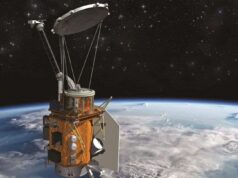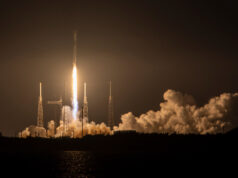
NASA has recently showcased the samples retrieved from the ancient asteroid Bennu, revealing significant levels of carbon and water. These findings, derived from the groundbreaking OSIRIS-REx mission, have the potential to shed light on the origins of life on Earth.
Key Highlights:
- The OSIRIS-REx mission successfully brought back chunks of a 4.6 billion-year-old asteroid.
- Preliminary findings indicate high levels of carbon and water in the samples.
- The samples were delivered to Earth last month, following a spacecraft flyby of the Utah desert.
- The mission’s primary goal was to collect over 2oz (60g) of asteroid material, but the actual retrieval surpassed expectations.
- The samples will be instrumental in understanding the formation of our solar system, the potential seeding of life’s precursor materials on Earth, and the necessary precautions for asteroid collision avoidance.
Delving into the Details:
The samples from asteroid Bennu, which were dropped off in the Utah desert on September 24, have been under rigorous analysis by NASA scientists. Dante Lauretta, the principal investigator from the University of Arizona, Tucson, described the samples as a “scientific treasure.” The carbon-rich fragments from Bennu, the most substantial collection of its kind, will enable researchers to delve into the mysteries of life’s origins for generations.
Bill Nelson, NASA’s administrator, emphasized the mission’s success, noting that the journey spanning almost 60 million miles and three years was even more fruitful than initially anticipated. The primary objective was to gather a specific amount of asteroid material. However, upon opening the canister, scientists found additional asteroid material on the collector head, canister lid, and base.
A Glimpse into the Analysis:
The preliminary analysis involved various techniques, including scanning electron microscopy, infrared measurements, X-ray diffraction, and chemical element analysis. An X-ray computed tomography was also employed to create a 3D computer model of one of the particles. This early examination revealed the abundant presence of carbon and water in the samples.
Bill Nelson highlighted that while the initial research offers valuable insights, the comprehensive study is just commencing. The samples will not only enhance our understanding of potential Earth-threatening asteroids but also provide a glimpse into the vast expanse beyond our planet.
Looking Ahead:
The samples from Bennu will be a subject of study for decades, offering insights into our solar system’s formation, the potential seeding of life’s precursor materials on Earth, and the necessary precautions for asteroid collision avoidance. Dante Lauretta expressed excitement about the discoveries, emphasizing the importance of understanding our cosmic heritage.
In the coming years, scientists will continue to characterize the samples. A significant portion will remain at the Johnson Space Center for further research, while additional samples will be displayed at various institutions, including the Smithsonian Institution and the University of Arizona.
Summary:
NASA’s OSIRIS-REx mission has successfully retrieved samples from the ancient asteroid Bennu, revealing significant levels of carbon and water. These findings have the potential to provide insights into the origins of life on Earth, the formation of our solar system, and the necessary precautions for asteroid collision avoidance. The mission’s success marks a significant milestone in space exploration and research.










